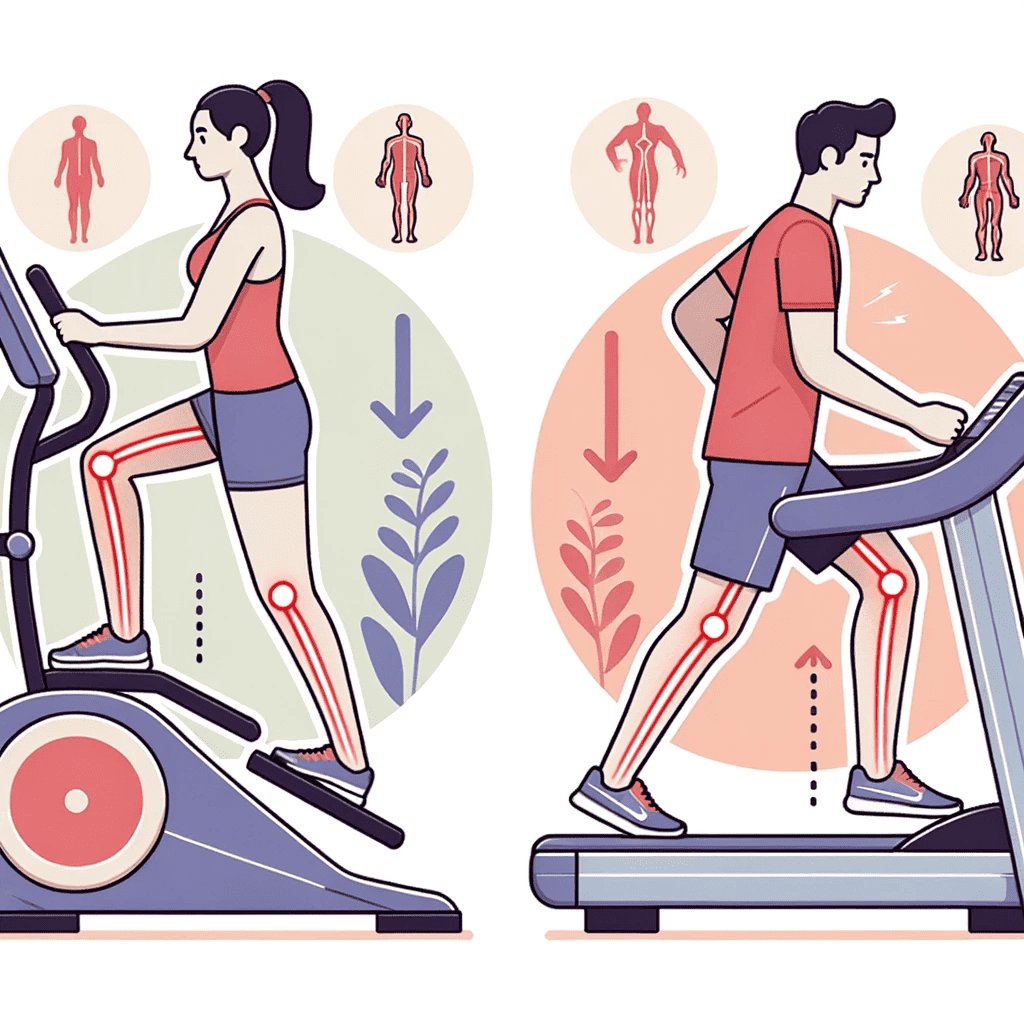Is the Elliptical Machine Good For Achilles Tendonitis?
Achilles tendonitis, a prevalent condition among athletes and fitness enthusiasts, brings to light the importance of exercise equipment in rehabilitation. The elliptical machine, with its gentle and consistent motion, is frequently debated for its effectiveness in this recovery journey. Personal accounts, like that of a runner who leaned on the elliptical post-surgery, reveal its potential as a rehabilitation aid.
For many individuals, especially seniors, the elliptical is more than just a machine. It’s a path to recovery and resilience. If you belong to the older age demographic or are advising someone who does, consider our comprehensive guide on the best ellipticals for seniors. These machines are designed to be gentle on joints and effective in delivering results, making them apt for Achilles tendonitis recovery and senior fitness.
Achilles Tendonitis Overview
Originating from Greek mythology, the Achilles tendon is more than just a legend. It plays a pivotal role in our mobility, aiding walking, running, and jumping. However, its vulnerability to overuse injuries has spotlighted its importance and the need for proper care.

Is Elliptical Good Or Bad For Achilles Tendonitis?
The elliptical machine’s design emphasizes low impact, ensuring minimal stress on joints and tendons. While it provides an effective cardiovascular workout, it also ensures that the feet and ankles experience reduced jarring motions, unlike traditional running or jogging. This delicate balance of intensity and gentleness positions the elliptical as a potential ally in the fight against Achilles tendonitis.
What is the Best Cardiovascular Exercise for Achilles Tendonitis?
A balanced rehabilitation regimen goes beyond just one machine or exercise form. While the elliptical stands out for its benefits, other exercises like swimming offer a full-body workout without straining the Achilles tendon. Similarly, stationary bikes and rowing machines provide low-impact alternatives that are both effective and safe.
Elliptical Vs Treadmill: Which Is Better For Achilles Tendonitis?
Both the elliptical and treadmill are gym staples, but they cater to different needs. The high-impact nature of treadmills, while excellent for cardiovascular health, might exacerbate Achilles tendonitis symptoms. On the other hand, ellipticals, with their controlled and predictable motion, offer a safer alternative for those with Achilles concerns.

Rehab Program: Crafting an Achilles-Friendly Routine
A structured rehab program is crucial for a holistic recovery. Here’s an extended routine that can be tailored:
- Elliptical Training: Start with 10-minute daily sessions. Gradually increase as comfort allows.
- Stretching: Incorporate daily calf and Achilles stretches.
- Strength Training: Exercises like calf raises are crucial.
- Balance Exercises: Balance pads and boards can improve stability.
- Plyometric Training: As you progress, gentle plyometric exercises can help restore explosive strength.
Continuing Treatment
Post-injury care often involves a mix of professional consultations, physical therapy, and home exercises. Regular check-ins with specialists, combined with a disciplined home routine, can accelerate recovery.
Supplements: Nourishing the Achilles
Incorporating dietary supplements can be a game-changer. Omega-3 fatty acids, known for their anti-inflammatory properties, can complement collagen and vitamin C in promoting tendon health.
Mobility Bands: A Game-Changer in Recovery
These bands, with their varying resistance levels, can be used for targeted strength exercises, especially beneficial for the calf muscles, enhancing Achilles support.
Eccentric Muscle Training: Deepening Recovery Insights
This form of training emphasizes controlled elongation of muscles under load. Techniques, such as eccentric heel drops, have been recognized for their potential in Achilles rehabilitation.
Compression Socks and Kinesiological Taping: Enhanced Support Systems
These tools offer dual benefits: support and reduced swelling. They can be particularly beneficial during active rehabilitation exercises, offering the tendon the support it needs.
Prevention: A Vision for the Future
Preventing future injuries is as vital as current recovery. Regular biomechanical assessments, training alterations, and footwear considerations play a pivotal role in future-proofing the Achilles tendon.
Conclusion
Achilles tendonitis, while daunting, is surmountable. With the right tools, knowledge, and discipline, recovery is not just possible but probable. The elliptical machine, with its myriad benefits, stands as a testament to modern rehabilitation approaches’ effectiveness.
An ex-triathlete, fitness coach and writer with a Masters in Sports Physiology. Fitness is my passion and I've had my fair share of home fitness equipment tried and tested!


One Comment